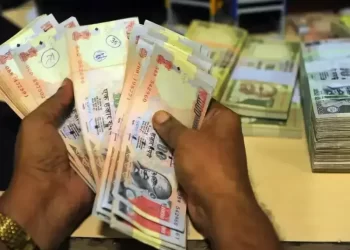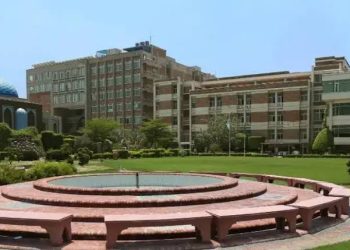
Headline inflation quickened to its fastest pace in nearly four years in July, mainly due to soaring prices of food and higher transport costs.
Preliminary data from the Philippine Statistics Authority (PSA) showed the consumer price index (CPI) at the national level climbed 6.4% year on year in July, from 6.1% in June and 3.7% a year ago.
This was higher than the 6.2% median estimate in a BusinessWorld poll conducted last week. It also settled at the upper end of the 5.6-6.4% forecast range of the Bangko Sentral ng Pilipinas (BSP) for that month.
July was also the fourth consecutive month that inflation went above the BSP’s 2-4% target range.
The July inflation print was the fastest growth in 45 months, or since the 6.9% logged in October 2018.
Month on month, inflation picked up 0.8%. Stripping out seasonality factors, month-on-month inflation inched up by 0.6% in July.
In the seven months to July, inflation averaged 4.7%, lower than the 4% seen in the same period a year ago. This was also lower than the BSP’s revised 5% inflation forecast.
At a press briefing on Friday, National Statistician Claire Dennis S. Mapa said that the July inflation was fueled by soaring prices of food and non-alcoholic beverages, transport, and restaurant services.
“Out of 13 commodity groups, eight of them showed a faster increase in prices in July,” Mr. Mapa said.
Accounting for almost 40% of the theoretical Filipino consumer basket, prices of food and beverages accelerated 6.9% year on year in July from 6% in June.
The food-alone index surged 7.1% annually last month from 6.4% in June.
Prices of meat rose 9.9% in July from 8.1% in June, while fish and other seafood jumped 9.2% from 6.7% the previous month.
Flour, bread, and other bakery products also went up 6.8% from 5.7% previously.
Alcoholic beverages and tobacco also increased 8.5% from 7.8%.
Transport, which accounts for nearly a tenth of the total consumer basket, likewise rose to 18.1% year on year in July from 17.1% in the prior month.
A hike in jeepney fares took effect in July, which pushed the price of other passenger transport by road up 7.1% from 2.7% in June. This was partially offset by lower prices of gasoline (45.4% from 53.9%) and diesel (91.3% from 92.5%).
In July, oil companies cut pump prices for gasoline by P11.1 per liter, and diesel by P12.95 per liter.
Other commodities that saw increases were restaurants and accommodation services (3.4% in July from 2.8% in June); recreation, sport, and culture (2.2% from 1.9%); clothing and footwear (2.5% from 2.2%); furnishing, household equipment, and routine household maintenance (3.1% from 2.9%); and personal care, and miscellaneous goods and services (2.8% from 2.6%).
Meanwhile, information and communication, education services, and financial services steadied at 0.5%, 0.6%, and 0%, respectively.
On the other hand, the index of housing, water, electricity, gas, and other fuels slowed to 5.7% in July from 6.6% the previous month.
Health also eased to 2.4% from 2.6% the month prior.
Inflation as experienced by the poor households, under 2012 prices, rose 5.9% in July, faster than the 5% in June and 4.4% last year.
UnionBank of the Philippines, Inc. Chief Economist Ruben Carlo O. Asuncion attributed the higher inflation rate in July due to the supply chain disruptions caused by the Ukraine-Russia war and ongoing pandemic.
“The main driver that I see is the higher fuel prices translating to higher inputs and/or transport costs. We also see further pass-through effects of, as mentioned, elevated fuel costs due to higher global crude oil prices,” Mr. Asuncion said in an e-mail interview.
He expects the inflation rate to remain elevated, with a 5% forecast for the third quarter.
“We still see inflation rising to 5.1% this 2022 and that third quarter 2022 inflation print may be seen still above 5%. Nevertheless, with easing global oil prices, (inflation) may ease further but remain elevated,” Mr. Asuncion said.
In a Viber message, Bank of the Philippine Islands (BPI) Lead Economist Emilio S. Neri, Jr. said the hike in jeepney fares and daily wages, coupled with the sharp depreciation of the peso, were likely the key drivers of higher July inflation.
The minimum fare in traditional jeepneys was raised to P11 from P9 and P10 starting last month. Modern public jeepneys also hiked minimum fares covering the first four kilometers to P13 from P12.
“Our full year estimate is still at 5.2% with headline print likely to peak close to 7%,” Mr. Neri said.
The BSP raised interest rates by a total of 125 basis points (bps) so far this year, including a surprise off-cycle hike of 75 bps last month, as it sought to contain broadening inflationary pressures.
BSP Governor Felipe M. Medalla earlier signaled they were ready to hike rates by 25 or 50 bps at its Aug. 18 meeting.
“The BSP is prepared to take all necessary policy action to bring inflation toward a target-consistent path over the medium term,” it said. — MIUC








